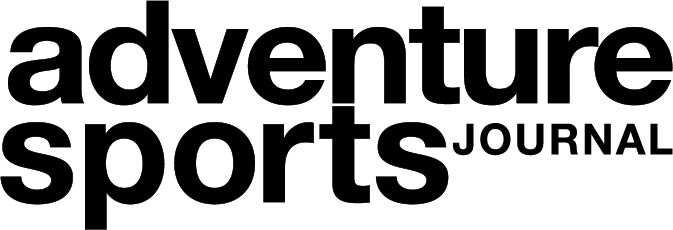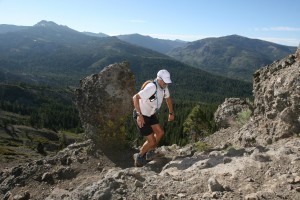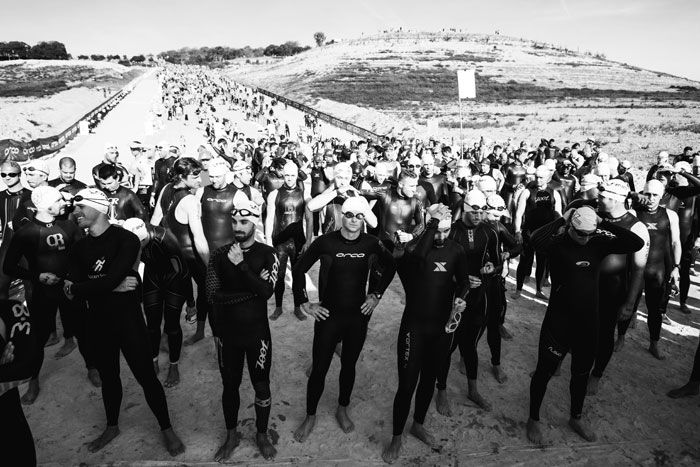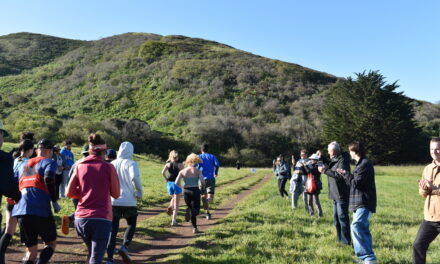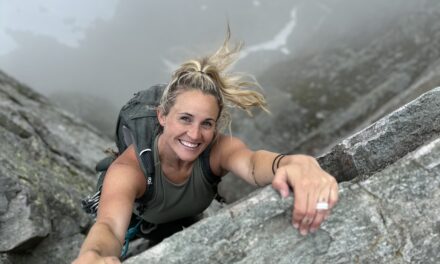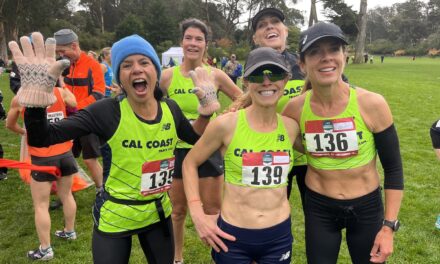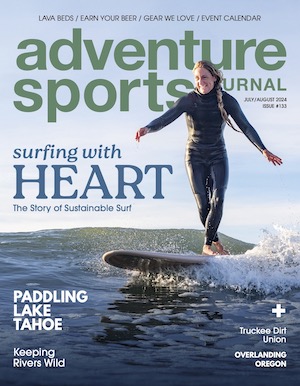- Tahoe’s Nevada Beach Tops the List of Hard-to-Book Campgrounds - 07/17/2024
- Cannabis Watershed Protection Program Cleans Up Illegal Grow Sites - 07/10/2024
- French Fire - 07/05/2024

Long May He Run — The Himalayan Quests of Dr. Bill Andrews
Reno geneticist/ultra-runner preps for 135-mile race in the Himalayas while he pursues lifetime goal to find a “cure for aging”
By Pete Gauvin
Audacious. Improbable. Mind boggling. Ludicrous.
These are words that come to mind when you first hear of Dr. Bill Andrews’ personal and professional goals. And certainly based on cursory impressions, they appear quite on target. In fact, without knowing more, you might well add insane, delusional and quack-headed to the list.
Tread below the surface of implausibility, however, and the certitude of these impressions quickly erodes like 20th century limits on technology. One’s take on Dr. Andrews shifts from: “Wow, this guy must be trying to sell some fountain-of-youth snake oil!” … to …“Holy smokes! Here’s a credible scientific visionary quite possibly holding the keys to a revolutionary extension of our lifespans!”
It didn’t take long for Andrews to wash my reflexive skepticism downstream in a flood of scientific awards, credentials and cogent, well-practiced explanations geared for a doubtful audience. And the outlandish first-time running event the 58-year-old is about to head to India to do, the reason he contacted us in the first place? That was made seemingly possible by his impressive ultra-running résumé.
My investigation began with a tour of the offices and labs at Andrews’ company, Sierra Sciences in Reno, where I saw sat down with Andrews for an interview. Andrews, who a PhD in molecular genetics, is founder, president and CEO of the 11-year-old biotech company, whose motto is no less than “Cure Aging or Die Trying.” The company employs about 25 people in a single-level building in an anonymous office park near the Reno airport.
My inquiry continued later that afternoon when I met Andrews for a short-but-tough six-mile run on a narrow goat track of a trail up Hunter Creek Canyon on Reno’s western edge.
But let’s get to those pies in the sky — before we bring them down to earth.
Running “High”
The first head-slapper, easier to wrap your brain around but astonishing in its own right, is that Andrews will be toeing the starting line July 24th of an inaugural footrace called The High (www.thehigh.in), a 135-mile ultra marathon in the Himalayas of India.
At 135 miles, The High is the same distance as the Badwater Ultramarathon (July 12-14 this year), which runs trhough Death Valley to the flanks of Mt. Whitney. Heretofore, Badwater has been recognized as “the world’s toughest foot race.” Andrews has run it twice.
“My goal is to run a 7-minute mile when I’m 130 years old. When I do that, or when somebody else does that, using treatments we’ve developed, that’s when we’re going to say that we’ve cured aging.”
— Dr. Bill Andrews
What separates The High is, of course, elevation. Sustained, ridiculous elevation! The course follows the Leh–Manali Highway through the “foothills” of the Himalaya. It starts at Rumptse (13,451 feet) and crosses four passes over 16,000 feet before finishing at Patseo (12,303 feet). The high point of the course is Tanglang La at 17,585 feet. Runners have 60 hours to complete the course.
For some perspective on its difficulty relative to other ultra-endurance events, I asked Gordon Wright, an ultra runner and president of Oustide PR, an endurance race promoter in San Francisco. “I’m convinced, after only a cursory glance at this event, that it represents the current limits of human endurance,” he said.
The High is designed to bring attention to the receding glaciers of the Himalayas, often called the “water tower of the world” because they contain the largest store of fresh water in the world after the north and south poles. The waters of 10 major river systems originate in the Himalayas, sustaining nearly one-fifth of the world’s population.
A couple hundred accomplished ultra-runners from around the globe were invited to compete in the race, according to Andrews. However, the field is limited to 40 runners max.
But organizers aren’t going to have to worry about that. Due to expense or distance or time, or maybe sanity, only a few signed up. In fact, other than Andrews, only three others committed to this year’s race, and one of those is Andrews’ girlfriend, Molly Sheridan, 52, of Las Vegas. And Andrews said there was some question whether the other two runners signed up — two Brits, Sharon Gayter and Mark Cockbain — were going to back out. (Gayter did cancel. But the race director himself, Rajat Chauhan, has decided to run, so the field is still at four.)
“Everybody else is saying they want to wait and see if it’s possible,” says Andrews. “Apparently, a whole bunch of people signed up for next year. But nobody wants to do it this year because they’re afraid of altitude sickness.”
“Right now it’s not a race,” he adds. “It’s an opportunity to see if somebody can do 135 miles at that altitude under 60 hours.”
Andrews is comfortable being one of the guinea pigs. You might even say he’s cut out for it given his scientific goals. And as an ultra-runner for 14 years, he’s got the chops: He’s competed in more than 100 ultramarathons 50 miles or longer. In 1998, he ran more 100 milers than anyone else in the world and completed the Grand Slam of Ultrarunning: the Western States 100, the Vermont 100, the Wasatch 100 in Utah, and the Leadville 100 in Colorado.
But in addition to the challenge, his reason for doing The High is much more pedestrian: He’d rather try new races because it’s “boring” to do the same races over and over again.
Relative to the race demands, Andrews’ preparation seems rather modest. He typically averages about 75 miles a week: 5 miles on Monday, 8 on Tuesday, 15 on Wednesday, five on Thursday, Friday he takes off, 25 on Saturday, 15 on Sunday.
“I’m also competing in 50 and 100-mile races as often as I can right now which is more than once a month,” he said when I talked to him in June.
How will he prepare for the altitude? Though he’s lucky he doesn’t live at sea level, Reno’s 4,400-foot elevation doesn’t begin to replicate the thin air of The High’s course. Even the peaks of the surrounding mountains where he often trains don’t come close. So Andrews has been experimenting with a portable altitude simulator from an Arizona company called AltoLab. In addition, he’ll arrive in India a couple weeks before the race to acclimatize.
Like most everyone else, Andrews acknowledges that it’s difficult to balance training with his work demands. And that brings us to the one thing about Andrews more fascinating and astonishing than running 135 miles at altitudes above the highest summits in the continental U.S.
“Cure Aging or Die Trying”
Dr. Andrews professional — and personal — goal is to find a cure for aging. He says his company, Sierra Sciences, is well on its way, probably closer than anyone else in the world, to accomplishing that. It’s conceivable, he says, if they get the funding they need, they could have an FDA-approved drug ready in 15 years that would undo or significantly slow down the process of aging at the cellular level, and prevent a host of age-related diseases as well.
We’re not talking immortality here, but a significant extension of life. Sierra Sciences is a company “devoted to finding ways to extend our healthspans and lifespans beyond the theoretical maximum of 125 years,” states its website, www.sierrasci.com.
“When I first started everyone thought this was an impossibility,” says Andrews. “It took us about eight years to show proof that this was possible and that was only about two and a half years ago.”
The extension of life could be on par or far greater than the lifespan jump that’s occurred in recent history. In just over a century, the average life expectancy in the U.S. has increased from 47.3 years in 1900 to 78 years in 2008.
Andrews thinks lifespans of 130, 150 years or more are possible. “With the technology we’re developing we have no idea what the limit is,” he says.
For reference, the longest living person confirmed to date was Jeanne Louise Calment of France, who died at age 122 in 1997.
The Benefits of Intense Exercise
Ultramarathons like The High are part of Dr. Andrews’ inspiration for seeking a cure for aging. At 58, he’s determined not to let his age stop him from pushing himself to the limits of what the human body can accomplish. And he believes ultra running will help him stick around long enough to see an actual cure for aging come around the corner.
Andrews keeps his cool modeling a ventilated Sun Precautions Solumbra running suit. Photo courtesy of Bill Andrews.
“Right now it’s not a race. It’s an opportunity to see if somebody can do 135 miles at that altitude under 60 hours.”
— Dr. Bill Andrews on The High ultrarun
“I’ve always believed that exercise is the number one thing that could extend our lifespans and healthspans as much as possible,” he says. “And I’ve always believed, because I’ve seen really elderly people competing really well in endurance races, the more exercise the better. I don’t care what the mouse experiments say. Humans: the more exercise the better.”
Only in the last year are scientific publications coming out proving that to be the case, he says. “Two papers have come out that show that you can have a biological age that is less than people your own age if you do intense exercise, and the more intense the better.”
Many papers, he adds, have also come out in the last few years demonstrating that joint pain actually is less if you run all the time.
“You’re less likely to have joint pain if you’re a really consistent, serious runner, than if you take breaks all the time,” he says. “People that run marathons feel fine right afterwards. The next day they’re sore. Whatever’s causing the soreness, the inflammation and the swelling, that’s actually causing the damage. So getting yourself to where you can run a marathon and not go through all this inflammation and stuff is the way to really keep from having joint pain.”
“People like me, I never get any joint pain anymore. Occasionally I twist something. Then I’ll go see a physical therapist. But I’m not suffering from the joint pain that other people do. I’ve got an identical twin brother who does not run and he’s got joint pain.”
“Short Telomeres are Bad News”
If Andrews has a maxim to live by it’s: “Short telomeres are bad news.”
What are “telomeres” and what are “telomerase genes?”
Telomeres are the clock that controls aging, says Andrews. They’re found at the tips of our chromosomes, acting like protective caps that protect them from deterioration. They’re often likened to the cap at the end of a shoelace (an “aglet”). Telomeres are longest before we’re born and they shorten throughout our lifetimes, each time our cells divide and our chromosomes replicate. Once they get to a certain point, our cells cannot divide any further (known as “cellular senescence”) and we die of old age.
The time remaining on our “telomere clocks” can be measured from our blood cells, and there are laboratories that will do this for you, Andrews says.
The curious thing is that not all of our cells experience this shortening. Our reproductive cells — our sperm and our egg cells — for all intensive purposes, don’t age. Otherwise, “they would contain telomeres the same length as the rest of our cells, which would yield embryos as old as we are,” Andrews explains on the Sierra Sciences website. “Because so much cell division takes place in the womb, our children would then be born much older than us. Humanity could not exist more than a generation or two if this were the case.”
Obviously, evolution is behind this. More specifically, it’s because reproductive cells contain an enzyme called telomerase that re-lengthens the telomeres as they shorten.
Sierra Sciences is searching for pharmaceuticals that will induce the production of telomerase in all our cells. That breakthrough in 2007 that Andrews mentions — that’s when they found the first drug that “turns on the telomerase gene.”
“Since then we’ve found 38 more,” Andrews says. The process has sped along because prior to finding the first drug they had no positive controls to test for detection of telomerase activity. Since then the company has redesigned all its protocols for screening. With the help of million-dollar robotic machines that never take a coffee break, they are able to screen 4,000 compounds per week. “We found something more potent just a few months ago,” he says.
Countering Skepticism
Despite being grounded in science, Andrews is acutely aware of the skepticism that initially arises when he talks about finding a cure for aging. “Ever since I was 10 years old I’d wanted to find a cure for aging and everywhere I looked all I found was quacks.”
In his presentations he strives to counter those perceptions. “No one comes by and says, ‘Oh, you’re a charlatan or a quack,’ after they see my presentation,” he says. (You can view one of his presentations on the home page of Sierra Sciences’ website.)
And it’s getting easier to talk about. “Aging research is actually coming to the forefront now,” he says. “Believe it or not, even when we started this company, we stayed in the closet … Investors and anybody we associated with were afraid to let anybody know they were associating with us because we were, ‘curing aging.’ And that doesn’t happen anymore.”
A number of media have recently done pieces on his research, including Discover magazine, the BBC’s Horizon TV series, and National Geographic TV, though the latter two have yet to air in the U.S.
Extending Healthspans
“When I talk to people,” says Andrews, “they say why would somebody want to live forever. I say, well, I love living. I don’t ever want to die. And I can’t imagine that a day is ever going to come where I’m going to say, ‘OK, I’ve had enough’ —unless I’m unhealthy. So that’s the chief priority here — not just to extend our lifespans but to extend our healthspans too. … We want to dance, play tennis and have the time of our lives when we’re 150 years old.
“There’s this theoretical maximum of a 125 years. My goal is to demonstrate that I can run a 7-minute mile when I’m 130 years old. When I do that, or when somebody else does that, using treatments that we’ve developed, that’s when we’re going to say that we’ve cured aging.”
There are a lot of things already on the market that actually do extend lifespan by extending healthspan, he says, by helping to keep people healthy. “Resveratrol does that. Resveratrol will probably add five to ten years to a person’s life,” he says, also mentioning antioxidants, omega-3 fatty acids and Vitamin D.
“I take like 25 supplement pills every day. I’m a big fan of a company called Life Extension Foundation. They have a magazine and sell products and I do what ever they say. The field of anti-aging is so broad, so big now, that nobody can stay on top of everything. So I’m really focusing on the telomeres and I’m relying on the people I consider experts to keep me apprised of everything else I should do.”
Ties to Cancer, AIDS, other diseases
Prior to founding Sierra Sciences, Andrews was director of molecular biology at Geron Corporation, based in Menlo Park. He led the research that discovered the components of telomerase and was awarded second place as “National Inventor of the Year” in 1997 for his work. He is a named inventor on 35 patents for telomerase.
While at Geron, much of Andrews research was focused on cancer. There are potentially major breakthroughs in preventing and curing cancer in the telomere research he’s doing now.
“A cure for cancer would definitely extend our lifespans,” Andrews says. “I think one of the most exciting new developments is the finding that a major cause of cancer is short telomeres. When telomeres get short that causes all the mutations that cause a cell to become cancerous. So keeping telomeres long is a way to actually decrease the risk of cancer.”
It appears that most of these mutations result from short telomeres. “This is why cancer is so much more prevalent in the elderly,” he says. “But short telomeres can exist in young people too if, say, their immune system is taxed a lot. The cells have to divide and when cells divide, the telomeres get shorter.
“A good example is the AIDS virus. When an AIDS virus infects a person, the immune system starts dividing like mad to kill off the AIDS virus. And it’s unsuccessful, so it just keeps dividing, dividing and dividing. And the division causes the telomeres to get shorter. In the early 1980s when doctors were first surprised to find that people infected with the AIDS virus had no T cells, or immune cells, that was why: Because their telomeres were shortened to the level of old people. Their immune system died of old age.
“One of our goals is that our drugs should make AIDS patients live a normal life. Being infected with AIDS, your immune system gets weak and you become vulnerable to all the different infections and cancers, like Kaposi’s saroma (a cancer that develops from cells that line lymph or blood vessels, often forming skin lesions.)
“Practically every disease we’ve ever heard of has some role in cell division and telomeres,” Andrews continues. Some of the diseases that could potentially be prevented or cured by lengthening telomeres include: cancer, heart disease, Alzheimer’s, osteoporosis, osteoarthritis, and macular degeneration, the number one cause of blindness in the elderly.
“There are at least 30 (diseases) I’ve identified,” Andrews says. “And that’s probably just a fraction of what they really are because anything that involves cell division is going to have telomere shortening.”
The Nobel Prize in medicine was just awarded last year to colleagues of Andrews that pioneered research showing that telomeres play a big role in not just aging but overall health. “And I was awarded second place for United States Inventor of the Year (in 1997) for figuring out how to stop telomere shortening, and that’s what this company is focused on.”
In regards to cancer, in the past researchers have suspected that telomerase promotes cancerous cells. But, Andrews says, “Everyday I’m reading a new scientific publication (that says) telomerase doesn’t cause cancer. Short telomeres cause cancer. And short telomeres can cause cancer cells to turn on the telomerase gene. But if you can put telomerase in before the telomeres get short, then the cells will never become cancerous to begin with.”
“The Manhattan Beach Project”
Andrews believes Sierra Sciences may be 10 years or more ahead in this research than any other company in the world, but it doesn’t mean they’re not sharing what they’ve learned in order to some day possibly make a ship-load of money. That would defeat the purpose and possibly delay the mission too long for it to benefit anyone currently involved.
“We’re all dying of aging. So the real top leaders in the aging field are all working together,” Andrews says.
Last year Andrews helped organize a three-day conference with the world leaders in anti-aging in Manhattan Beach near Los Angeles. They called it “The Manhattan Beach Project.” (Videos of Andrew’s presentation at that conference are available on YouTube.)
“We got together in one room, roundtable discussion, we met for three days and that was very, very exciting. The whole idea was that we all agree. Every single person in that room was in the field because they are trying to cure their own aging. And so they don’t want to compete; they want us all to work together.”
A more practical reason they need to work together is that there is little funding available for age research that is not tied to a specific disease. And venture capital is more focused on short-term profits than long-term cures.
Andrews estimates Sierra Sciences will require $30 million to get a drug to the FDA and another $100 million to get through the FDA. “We’ve already spent $30 million getting to where we are now,” he says. Finding new funding he hopes will be easier now that they have drugs that show promise.
Anti-Aging vs. Curing Aging
There’s very little competition in the field of curing aging, Andrews says.
“There’s more competition in the field of anti-aging — human growth hormone, testosterone, resveratrol, things like that. Those things are going to add a few years of life to you by improving your health. But they’re not going to cure aging. A cure for aging is actually something that’s going to stop or really slow down the aging process. And that’s a whole separate field. We are one of the few companies that are actually doing something to cure aging.”
There are a bunch of different things doctors can recommend to combat aging, he says. “Those are just going to make you healthier, which is a good thing. I strongly encourage them. But they’re not enough for me. I want more than five or 10 more years.”
How Can Earth Sustain Us?
And what if Andrews or others are successful in finding a cure for aging? What about its impacts on overpopulation and shrinking resources and pollution and Social Security and retirement pensions and all the rest of the societal and environmental issues? Won’t we exceed Earth’s capacity to accommodate us?
Andrews addresses this on Sierra Sciences’ website in greater detail. His core answer is that birthrates will decline just as they have before when our life expectancy significantly increased over the last century. In less than four decades, he notes, the average number of children per family was more than cut in half, from 6 to 2.9.
“Today, most researchers think we are headed quickly towards a stable population,” he writes. “Evidence is mounting that humans will simply not reach populations larger than our ability to sustain them: economics preclude us from doing that. As resources become scarce, prices rise, and as prices rise, family sizes shrink.
“Is it a bad thing that our medical advances have nearly doubled our life expectancy?” he asks. “Most would say it’s a decidedly good thing. So it’s probably a safe bet that if we can drastically increase that figure again, future generations will also look back on it as beneficial.”
Now that doesn’t sound so ludicrous after all. And Andrews will soon find out if running 135 miles in the Himalayas is a ludicrous undertaking. It’s all part of a rich life of discovery — one that he hopes will be exceedingly long.
